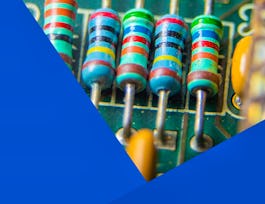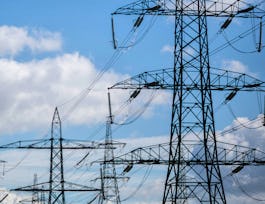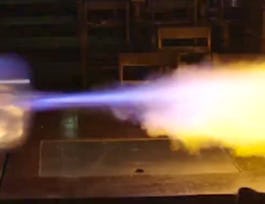This course is a continuation of Electrodynamics: An Introduction. Here, we will cover different methods of calculating an electric field. In addition, we will introduce polarization, dielectrics, and how electric fields create dipoles.

Offrez à votre carrière le cadeau de Coursera Plus avec $160 de réduction, facturé annuellement. Économisez aujourd’hui.


Electrodynamics: Analysis of Electric Fields
Ce cours fait partie de Spécialisation Electrodynamics

Instructeur : Seungbum Hong
9 446 déjà inscrits
Inclus avec 
(163 avis)
Détails à connaître

Ajouter à votre profil LinkedIn
5 quizzes
Découvrez comment les employés des entreprises prestigieuses maîtrisent des compétences recherchées

Élaborez votre expertise du sujet
- Apprenez de nouveaux concepts auprès d'experts du secteur
- Acquérez une compréhension de base d'un sujet ou d'un outil
- Développez des compétences professionnelles avec des projets pratiques
- Obtenez un certificat professionnel partageable


Obtenez un certificat professionnel
Ajoutez cette qualification à votre profil LinkedIn ou à votre CV
Partagez-le sur les réseaux sociaux et dans votre évaluation de performance

Il y a 5 modules dans ce cours
The primary focus of the first portion of this module is the concept of dipole moments, both for a single molecule and an arbitrary distribution. The equations for both the potential and the electric field of a dipole are derived within the first part of the lecture. This lecture also describes the method of images and how it can be applied to solving the electric field from different geometries.
Inclus
3 vidéos2 lectures1 quiz
In this module, we cover how to solve for 2D electric fields, and also introduce some basic applications for electrostatics. We describe how imaginary numbers can be used to plot the electric field and equipotential surfaces. Then, we discuss how concepts such as natural resonance, potential distribution, and grid spacing can help design modern devices and experiments.
Inclus
2 vidéos1 lecture1 quiz
This module introduces the importance of electrostatic energy and describes how to evaluate it. It also covers how to use the concept of virtual work and how that can be used to find force; specifically we examine this in respect to capacitors. Finally, we discuss where the electrostatic energy can be located.
Inclus
2 vidéos1 lecture1 quiz
In the first module concerning dielectrics, we discuss what constitutes a dielectric material and how their presence effects the operation of a capacitor. Then, we cover many ways to characterize a dielectric such as susceptibility and displacement. Finally, we investigate the forces on a dielectric with respect to the capacitor.
Inclus
2 vidéos1 lecture1 quiz
This module starts by describing how to obtain polarization for molecules under an electric field. Then, we cover methods to solve for the dielectric constant, such as Clausius-Mossotti Equation and Onsager Equation. Our last topic covered is the concept of ferroelectricity and how ferroelectric materials can be modeled by the Curie-Weiss law and other methods.
Inclus
3 vidéos1 lecture1 quiz
Instructeur

Recommandé si vous êtes intéressé(e) par Electrical Engineering

Duke University

Pontificia Universidad Católica de Chile

University at Buffalo

Rice University
Pour quelles raisons les étudiants sur Coursera nous choisissent-ils pour leur carrière ?




Avis des étudiants
Affichage de 3 sur 163
163 avis
- 5 stars
82,82 %
- 4 stars
12,26 %
- 3 stars
3,68 %
- 2 stars
0 %
- 1 star
1,22 %

Ouvrez de nouvelles portes avec Coursera Plus
Accès illimité à plus de 7 000 cours de renommée internationale, à des projets pratiques et à des programmes de certificats reconnus sur le marché du travail, tous inclus dans votre abonnement
Faites progresser votre carrière avec un diplôme en ligne
Obtenez un diplôme auprès d’universités de renommée mondiale - 100 % en ligne
Rejoignez plus de 3 400 entreprises mondiales qui ont choisi Coursera pour les affaires
Améliorez les compétences de vos employés pour exceller dans l’économie numérique
Foire Aux Questions
Access to lectures and assignments depends on your type of enrollment. If you take a course in audit mode, you will be able to see most course materials for free. To access graded assignments and to earn a Certificate, you will need to purchase the Certificate experience, during or after your audit. If you don't see the audit option:
The course may not offer an audit option. You can try a Free Trial instead, or apply for Financial Aid.
The course may offer 'Full Course, No Certificate' instead. This option lets you see all course materials, submit required assessments, and get a final grade. This also means that you will not be able to purchase a Certificate experience.
When you enroll in the course, you get access to all of the courses in the Specialization, and you earn a certificate when you complete the work. Your electronic Certificate will be added to your Accomplishments page - from there, you can print your Certificate or add it to your LinkedIn profile. If you only want to read and view the course content, you can audit the course for free.
If you subscribed, you get a 7-day free trial during which you can cancel at no penalty. After that, we don’t give refunds, but you can cancel your subscription at any time. See our full refund policy.

